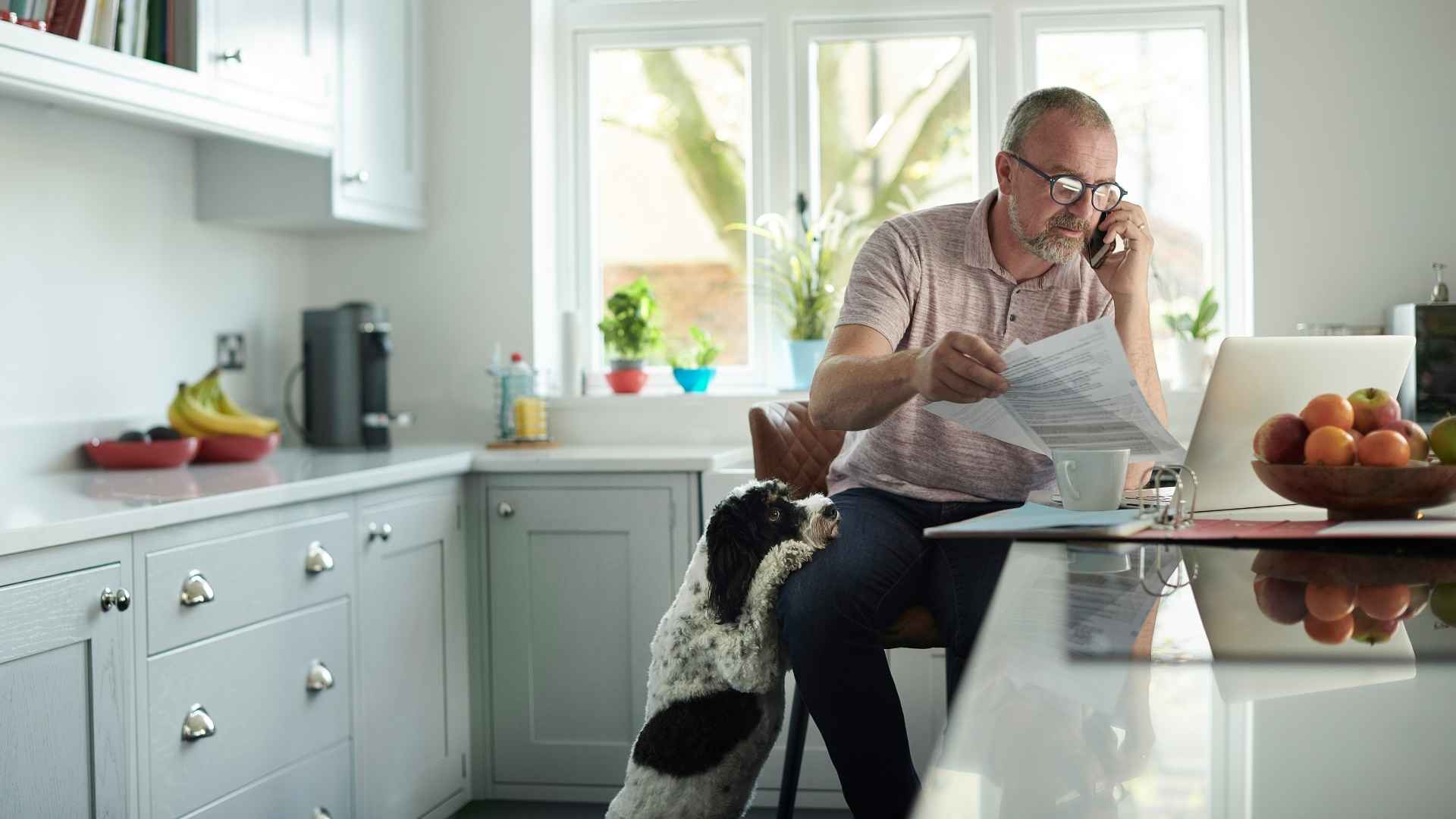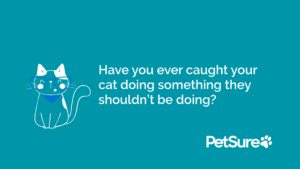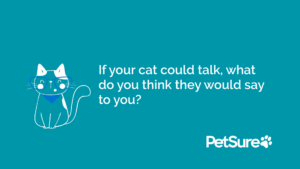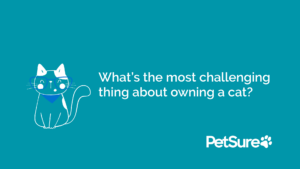As school pickups and drop offs, long days at work and social and sporting events resume, it is important to ensure our pets needs are still being met and that they’re coping with the lack of constant company at home that they’ve become used to.
In this article, we go through all the aspects you should consider and steps to put in place to ensure the adjustment is as seamless as possible for your pets. By ensuring our pets needs are being met, we can help minimize stress, frustration, excess energy, and other behaviours that we may see develop as we return to busier lives.
To start with, let’s go over what the natural needs of our pets are:
- Physical exercise
- Mental enrichment and stimulation
- Adequate rest and sleep
- Social interaction and affection
- Species specific outlets (dogs: sniffing, licking, digging, chewing) (cats: climbing, scratching, hunting)
- Breed specific outlet (retrieving, herding, swimming, etc.)
It is important for your pets wellbeing that these needs are met appropriately and frequently depending on your individual pet. You may be thinking that it’s simply not possible to get all these needs met weekly, let alone daily – but we are here to show you exactly how to with easy steps even the kids can help with!
Physical exercise
The quantity and intensity of physical exercise is very much dependent on your specific dog. Younger dogs often require more frequent opportunities to burn energy but generally for shorter lengths of time. Older dogs may require less intensity, demand, and duration of exercise, especially if suffering from conditions such as arthritis or other ailments that may cause discomfort with excessive movement. For cats, especially indoor cats, ensuring they have plenty of appropriate things to scratch, climb on, hide in, and play with to help motivate them and keep them entertained are essential.
Three important things to note about physical exercise are:
- Physical exercise is not the only way to tire our pets. Which was more exhausting for you – recess or a math exam? Mental stimulation works wonders at exhausting our dogs safely and appropriately.
- Building an athlete; – Intense and frequent physical exercise works the same in dogs as it does with us by making us fitter, generate more energy and therefore have a higher demand to burn that energy off more frequently. This is commonly known as ‘building an athlete’ out of your dog. This isn’t to say you exercise your dog less, the key is to ensure there is variation in the type and intensity of exercise. Perhaps, instead of a 5km run every day, maybe opt for two days per week along with a longer walk, swimming and games such as tug throughout the week.
- Have fun! Physical exercise also comes in the form of play. Play is important for dogs and cats as it releases lots of happy hormones and helps develop and maintain a strong bond between you and your fur-babies. You can find more information on types of play and why it’s important here.
Preparing for back to work will mean scheduling in when your pet gets their daily exercise and play time. If you can, share the load between family members. Remember to always supervise young children when playing with or walking pets to make sure everyone is safe.
If time is not on your side, you may wish to consider the services of reputable dog walkers, doggy day care or a qualified reward-based dog trainer to take your dog out during the day while you are at work to ensure your dog gets what they need. Trusted friends, neighbours, or family members may also be more than happy to lend a helping hand in caring for your pets.
Cats often spend most of the day sleeping, so it can be up to us to engage them in play when they are receptive to it. Evenings (before bedtime) can be a great time get the laser pointer out, feather wand, or another favourite cat toy, and entice them to run, jump and stalk the item. Some cats will even embrace a game of “fetch” that would rival any dogs’ skills!
Scatter lots of toys or even scrunched-up paper balls around the house and most cats will eventually start pushing it around. Test out different types, shapes and sounds with cat toys, until you find one your cat likes best.
If you are lucky enough to have two cats who are friendly to one another, they will likely exercise among themselves and shouldn’t need too much interference from you.
Mental enrichment and stimulation
Mental enrichment and stimulation include so many things to fulfil your pets’ natural needs and keep their brain and body healthy.
One of the easiest ways to ensure this need is met daily is by never feeding pets’ their meals from a bowl. Dogs are natural foragers, and cats are natural hunters. Both activities require problem solving, using their brain and their senses to locate food and best of all – they enjoy it! So how can we feed meals not in a bowl?
- Scatter feeding– If you have a grass yard (other surfaces generally suitable also) and feed your pet kibble for any of their meals – toss it on the grass and VIOLA you have your pet eating, entertained for more than a few minutes, using their brain, stimulating their senses and burning energy! For indoor cats, scattering kibbles and toy “prey” around/inside cat play structures encourages investigation and exploration.
- Re-use your recycling – cardboard boxes, newspaper, toilet rolls & milk bottles all make for easy brain-stimulating ways to feed.
- Slow feeders, treat balls and puzzle feeders can be sourced for both cats and dogs to help make meals much more enriching and stimulating for our pets.
- Check out another of our articles here for other ways to feed, enrich and tire your dog out.
Cats also need mental and environmental enrichments to fulfill their natural needs to keep them stimulated and happy. Apart from feeding enrichment, some examples of environmental enrichment that cats enjoy include:
- Providing different sizes, heights and locations of igloo beds, pet tents, empty shelves, or good old fashioned carboard boxes to explore can provide hours of entertainment. Moving them around periodically can help if your cat appears to have lost interest in them.
- Ensure they have cat trees where they can safely climb and scratch.
- If possible, invest in a cat safe outdoor play area where they can safely explore the outdoors without any risks such as being hit by a car, or hurting wildlife.
- Make use of cat grass and cat nip throughout the house. Most cats love cat grass to nibble on but bear in mind not every cat responds to catnip.
Adequate rest and sleep
Dog’s need quality sleep and rest. A well-rested dog can focus and listen better and may have a more stable and efficient nervous system, all of which greatly impact your dog’s overall wellbeing.
A young puppy will require more sleep (approximately 14 to 18 hours per day) than a well-adjusted adult dog (approximately 12 to 14 hours per day). A lack of adequate sleep can often see an increase in problematic behaviours such as biting, inappropriate chewing, barking and generally rowdy behaviour which may make you think they aren’t in fact tired at all.
Many of these behaviours may also be an indicator that your dog suffers from separation anxiety. In combination with a variety of other training processes, mild to moderate separation distress could be helped by gradually increasing the distance and time away from your dog. It is often best to contact a qualified reward-based trainer familiar with separation distress or contact your Veterinarian for further information or if your dog suffers significantly from separation distress.
Overall, if your dog is happy to wander off into another room for a few hours each day when you are still home, let them go. This is a good indicator they have some independence which we want to harness not hinder. If they are constantly at your feet, encourage them to spend some time away from you to help them transition in coming months.
Cats spend 12 to 20 hours of the day sleeping, with short bursts of energy in between periods of rest (it’s a tough life!). Wild cats sleep for long periods of time so that they have a strong burst of energy for hunting. Our domesticated feline fur babies have retained this trait, so embrace the short bursts of energy for fun and play with your feline companion. Cats can be a little more difficult to read when it comes to understanding whether they are stressed or not. Some signs that a cat might be suffering from separation anxiety may include going to the toilet in new/unusual places, eating less, changes in behaviour (crankier, hiding more), grooming excessively or even becoming physically ill (vomiting, diarrhea, urinary tract disease and so on).
Social interaction and affection
Dogs are a social species, but the level of sociability varies with each dog, much like us. Some dogs enjoy interacting with other dogs at dog parks, others with a friend somewhere more private, and some prefer their human company most. Whatever their preference is, it’s important for them not to be reliant on the constant company or interaction to be happy and calm.
Prior to these recent lockdown restrictions, many dogs may have been confident, had a strong sense of independence and happy to spend a chunk of the day alone. However, this independence could have been lost throughout this period of constant company. If you find your dog follows you throughout the house from room to room, known as ‘shadowing’, or seems upset when you pop out to the shops or to the shower, your dog may have developed some separation distress.
Here are some ways to gently build your dog’s confidence and independence whilst you’re still working from home:
- Crate training – crates can be a wonderful training tool and a place for your dog to have their own uninterrupted personal space. You can find more information on crate training here.
- Giving your dog part of their daily food portion in a slow feeder (such as Kong) or another puzzle feeder as mentioned above in another section of the house. This pairs your absence with something positive and brain stimulating. Further, it helps burn energy and are soothing behaviours which are more likely to send them off to snooze-land!
- Start with short periods away and gradually increase – the key to this exercise is to ensure you return before your dog becomes distressed.
- Enter and exit your home without making it a big deal. If we hype our dogs up every time we leave or come home, they can spend the day anticipating this excitement and level of arousal which triggers their nervous system into a heightened state.
Despite what is commonly believed about cats being very independent, cats can also be very social depending on the individual. Human-cat interaction include being picked up, cuddling, grooming, hand feeding, petting, talking to, lying on your lap or simply spending time together in proximity. During lockdown, our cats may have got used to seeing us for many more hours a day, and they too can develop some separation distress as we return to work. We can help them with similar techniques we use for our dogs, starting with short periods away, and slowly increasing the period. It is important not to make a fuss when you leave home, try to casually leave home and enter your home calmly. The use of synthetic facial pheromone diffusers may also help calm your cat when you are away from home.
Species and breed specific outlets
Dogs thrive when frequently presented with the opportunity to do dog things; run, sniff, dig, bark, and roll around. As you’ve likely gathered by now, there are so many ways to enrich our dogs lives even with less time at home.
So, what is a ‘breed specific outlet’? Many dogs were originally bred for a purpose and many of those traits and genetics are still strongly present in many dogs today. Cattle dogs, Border Collie and Kelpies’ herd, Labrador and Golden Retrievers retrieve, Terriers and Dachshund’s generally hunt.
Providing your dog with an outlet which emulates their original breeding purpose and honours these genetic traits can be super fulfilling for them and tick a few of those natural dog needs all in one short session. Here are some ideas which may be suitable for your dog:
- Flirt pole – this is basically a giant cat toy (the toy at the end of string attached to a pole) but for dogs. This game comes with rules and works on your dog’s impulse control and their focus on you, even when excited. Many dogs love this but it is especially great for breeds with a ‘prey drive’ or bred to hunt, herd or chase.
- Nose work – This works by having a target scent and your dog having to track it down. Good thing is you can easily do this at home – make it something useful like finding your wallet or keys. Great for dogs like Beagles, Spaniels and Pointers.
- Agility – Agility is such a great activity for many dogs to burn physical and mental energy. It is great for the kids to get involved with and get creative finding the different components. Think, an outdoor table as a tunnel, broom and mop as jumps, a hula-hoop as a hoop.
Cats like to hunt, just like their wild ancestors. Domesticated cats hunt to satisfy their hunter instincts and they do not necessarily eat their prey. The following ideas are welfare friendly ways to satisfy your cats’ need to hunt:
- Start by playing with a laser pointer and ending the game at a toy or treat where your cat can physically catch and chew on.
- Motorized, or not motorized toys that drops treats or their kibble out when it is manipulated.
- Cat-friendly motorised toys that mimic preys, or motorised toys that are triggered to move when touched.
- For some cats, by allowing a perched-up viewing stand so they can see wildlife outside could be enough to satisfy their hunting instincts.
Heading back to pre-lockdown life will be an adjustment for everyone in the family, even your pets. If you are concerned about the transition, contact your Vet or a reward-based qualified dog trainer about options suitable for your pets. Adjusting to any change takes time, so we recommend starting sooner rather than later to ensure the transition is as smooth as possible for your fur babies.
Pet insurance can help by covering a portion of the eligible vet bill if the unexpected happens. Because it is difficult to predict the costs of veterinary care, it can help to have measures in place to help prepare for the unexpected. Check out our partner network and explore our policy tools to find a pet insurance policy.
Not all conditions or items are covered by Pet Insurance. Refer to the applicable Product Disclosure Statement for information about coverage and exclusions.








